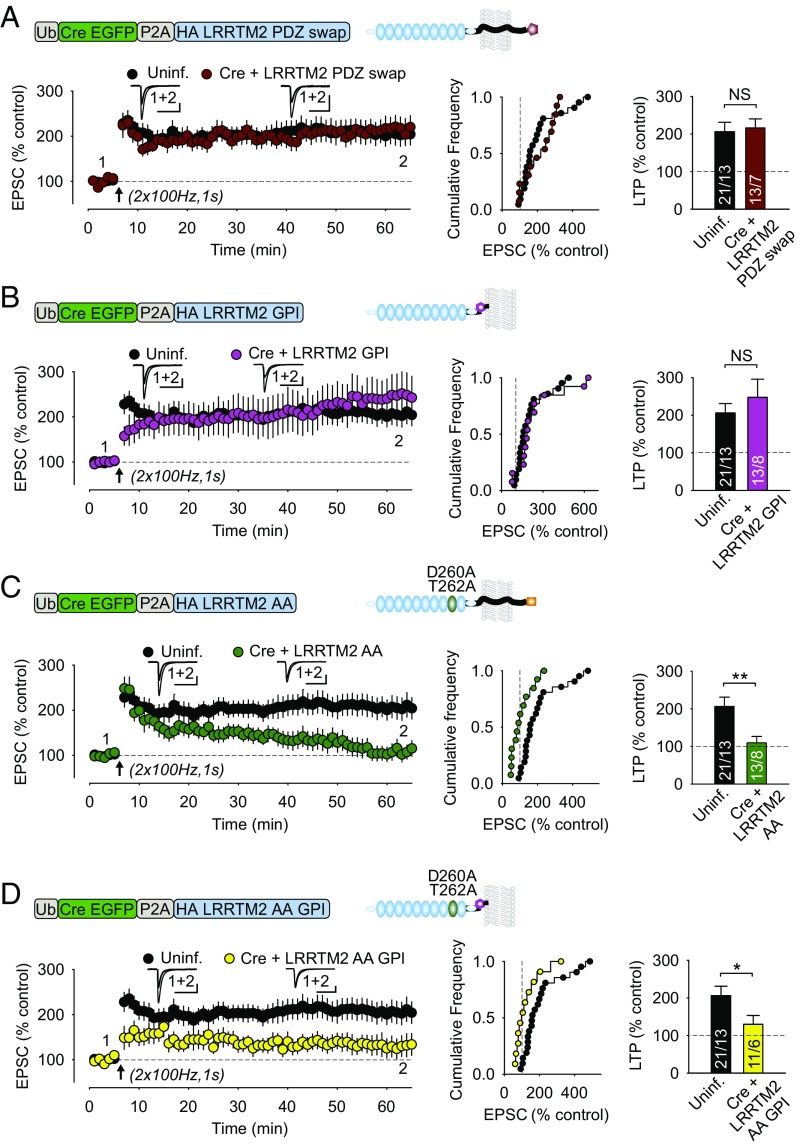Fig. 2.
Molecular replacement strategy reveals that LRRTM2 extracellular LRR domains and binding to neurexins are involved in LTP. Each image shows schematics of rescue constructs used in illustrated experiments. Results are shown as in Fig. 1. (A) Full-length LRRTM2 containing swap of C-terminal PDZ ligand with that for β2AR. (B) Extracellular portion of LRRTM2 anchored to the plasma membrane using GPI. (C) Full-length LRRTM2 containing two point mutations (D260A and T262A) that were designed to interfere with binding to neurexins. (D) GPI-anchored LRRTM2, as in B, containing neurexin binding mutations. (Scale bars: 50 pA, 50 ms.) Experimental n values are shown in bars and give cells per animals. All values plotted with error bars are mean ± SEM. *P < 0.05; **P < 0.01; NS, not significant. Uninf., uninfected.

